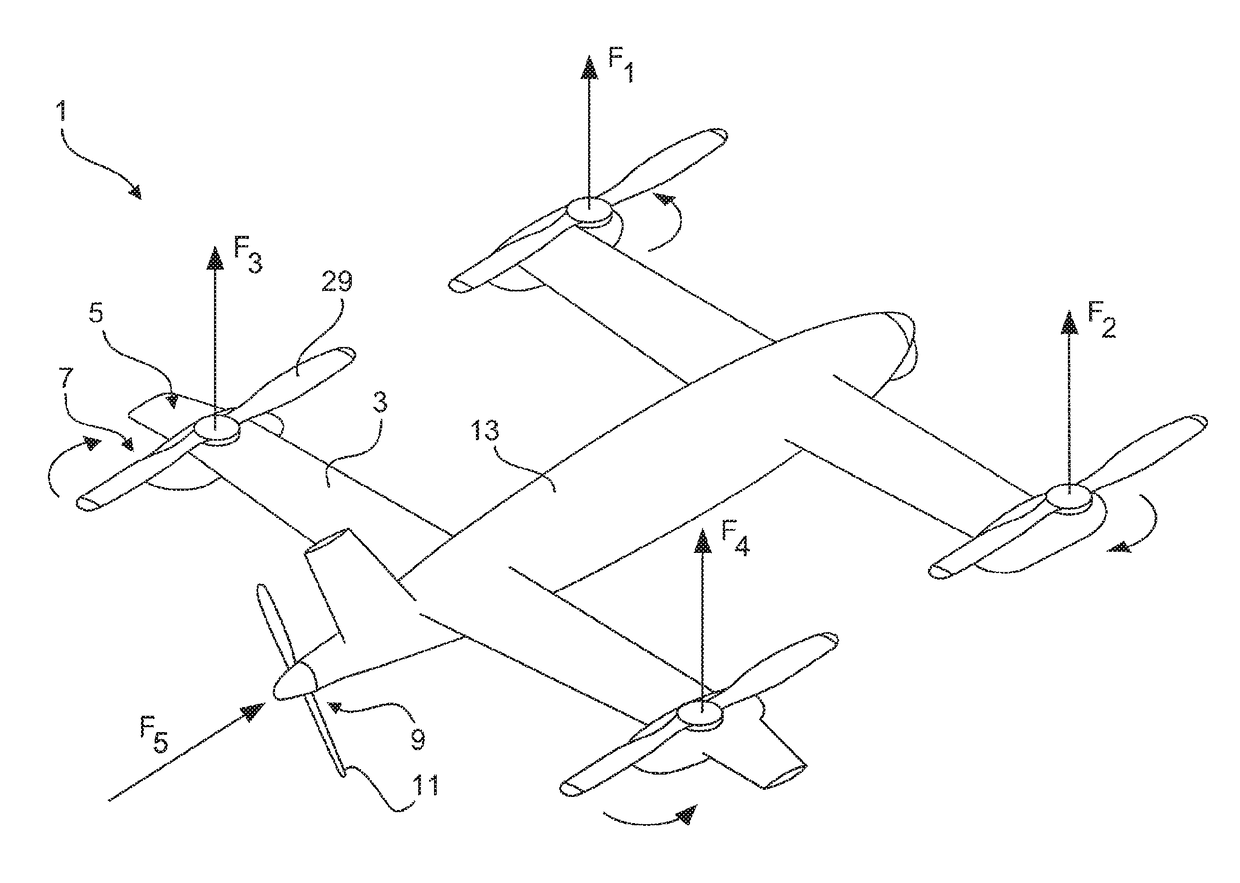Aircraft capable of vertical take-off
a technology of vertical take-off and aircraft, which is applied in the direction of vertical landing/take-off aircraft, aircraft, transportation and packaging, etc., can solve the problems of limited cruising speed which is achievable in this manner, limited cruising speed, and only achieving relatively low cruising speed, etc., to achieve good hover characteristics and high cruising speed
- Summary
- Abstract
- Description
- Claims
- Application Information
AI Technical Summary
Benefits of technology
Problems solved by technology
Method used
Image
Examples
Embodiment Construction
[0073]FIGS. 1 and 2 are a perspective view and a plan view of an aircraft 1 according to an embodiment of the present invention.
[0074]In the embodiment shown, the aircraft 1 has a tandem wing structure and, similarly to a quadcopter, one of four lifting rotors 5, fitted with a propeller 7, is arranged at both ends of each of the aerofoils 3. The lifting rotors are arranged on nacelles 6 at the ends of the aerofoils 3.
[0075]The aircraft 1 has a support structure 27 and a wing structure 15.
[0076]The support structure 27 provides the aircraft 1 with the necessary mechanical strength, for example, to transfer forces generated by the lifting rotors 5 or by the aerofoils 3 between individual regions of the aircraft 1. For this purpose, the support structure 27 has, for example, struts, stringers and formers which can form, inter alia, an elongate fuselage 13 as well as supporting parts of the aerofoils 3. The support structure can also be used to hold a camera system 30, for example,
[0077...
PUM
 Login to View More
Login to View More Abstract
Description
Claims
Application Information
 Login to View More
Login to View More - R&D
- Intellectual Property
- Life Sciences
- Materials
- Tech Scout
- Unparalleled Data Quality
- Higher Quality Content
- 60% Fewer Hallucinations
Browse by: Latest US Patents, China's latest patents, Technical Efficacy Thesaurus, Application Domain, Technology Topic, Popular Technical Reports.
© 2025 PatSnap. All rights reserved.Legal|Privacy policy|Modern Slavery Act Transparency Statement|Sitemap|About US| Contact US: help@patsnap.com



